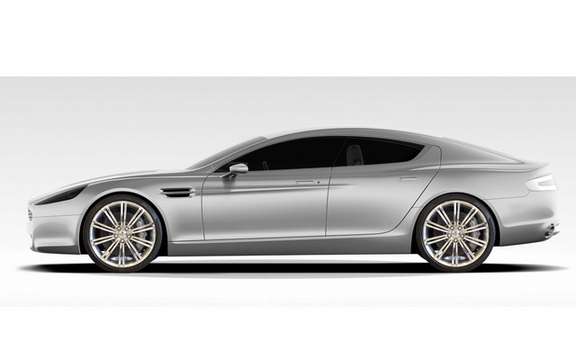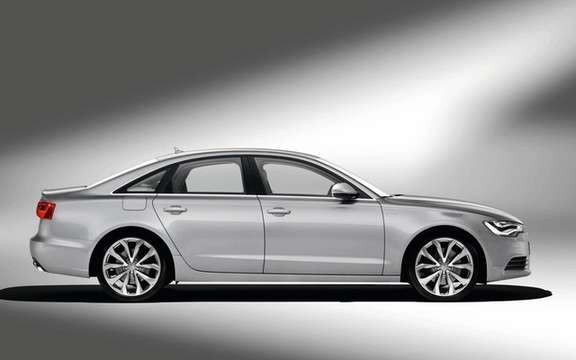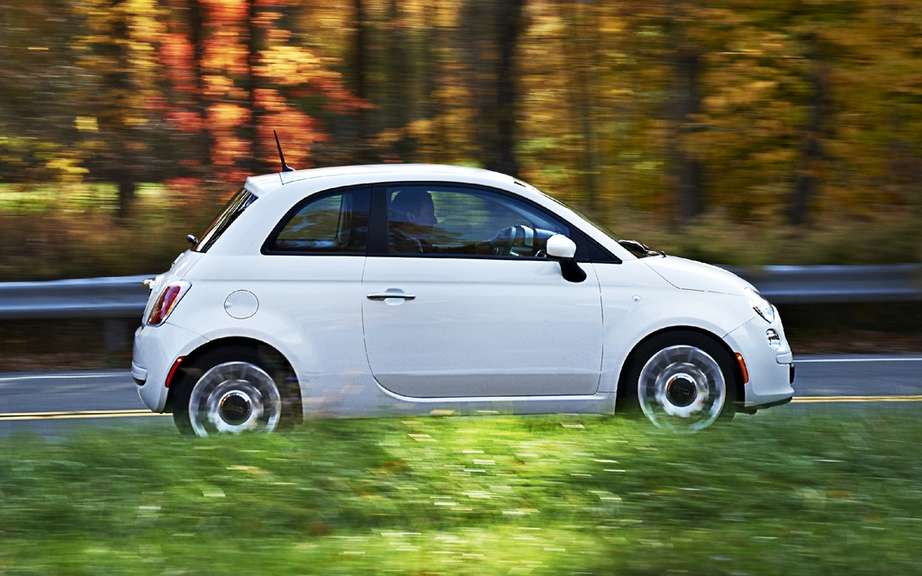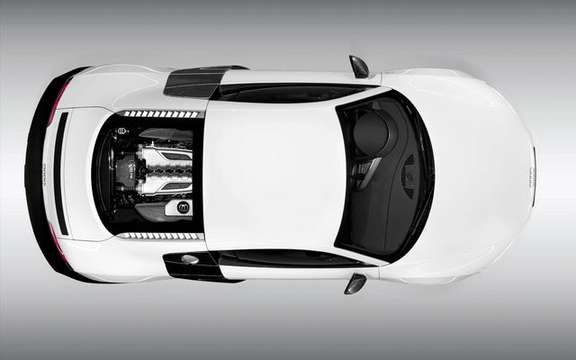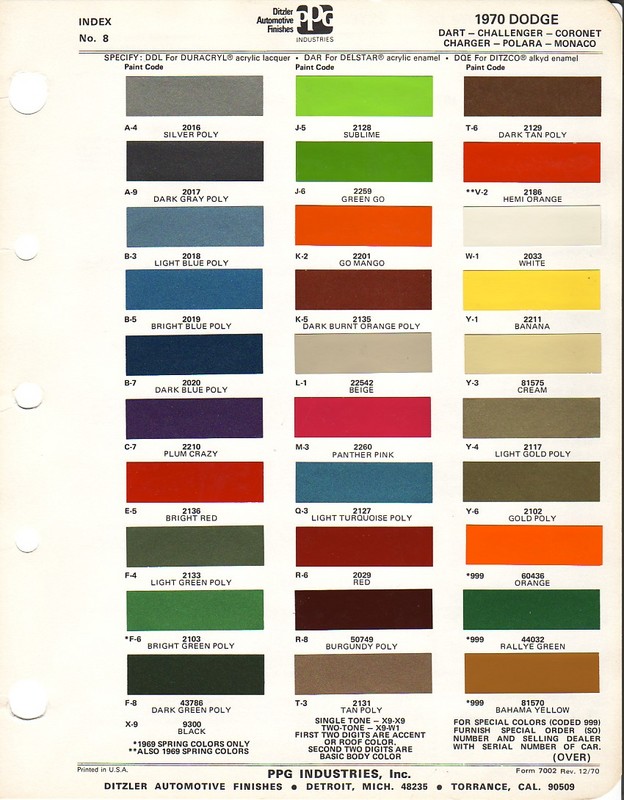DuPont announces the most popular car colors
Metallized gray dominates the world rankings in 2009 DuPont
DuPont announced that the metallized gray, black and white are the three most popular colors in the ranking of the popularity of colors vehicles worldwide. The Annual Report on the global popularity of automotive colors of DuPont, published for the 57th year, is the source of information which authority in the field of vehicles popularity of colors and patterns, giving a detailed classification for the major automotive markets and the most popular color in the world this year.
The ten most popular colors:
1 metallic gray -. 25%
2 Black -. 23%
3 White -. 16%
4 Grey -. 13%
Blue 5 - 9%.
6 Red -. 8%
Brown / Beige 7 - 4%.
8 Green -. 1%
9 Yellow / Gold - 1.%
10 Others. - < 1 %
"By collecting and analyzing data on the popularity of colors in the world, DuPont can better identify trends and help our customers in the automotive industry develop color palettes for years to come, says Nancy Lockhart, Director of Marketing colors for DuPont Performance Coverings. The automotive industry is becoming an increasingly global market, the regional and global data on the colors are vital to designers. "
Although the results indicate a continuous convergence in the choice of colors as well as preferences becoming more homogeneous in all regions, the regional differences remain. The three most popular colors - black, white and gray metallized - continue to be strongly represented throughout the world, and even gaining ground in all regions.
"It is important to recognize that today most people, no matter where they live in the world have access to leading-edge information on the popularity of grace colors from many sources like glossy magazines and sites Web fashionable, and can all see the same films widely, Leatrice Eiseman notes, general director of the Pantone Color Institute and author of the blog Eisemancolorblog.com. The most popular colors 'are those that meet the aspirations' and have a universal appeal. "
Changes in the market
"There are still some differences according to regions as to the preference, but global trends are undeniable, says Lockhart. The preference for one color can change from one year to another because of a host of factors, such as type of vehicle, the reduced size of vehicles, consumer tastes and even the economy. These factors, as well as other cultural, social and demographic influences can alter regional trends over time. "
In North America, white (17.8%) remains the color of choice, while black (17%) and metallized gray (16.7%) are respectively in second and third places. However, when the popularity of black analysis, an increase of six points was observed compared to 2005, while the popularity of metallized gray and white was reduced by about two points the last five years. Among the chromatic colors or "true", blue and red remain very popular in the North American market, having increased from 11% in 2006 to about 12% this year.
In Europe, the most popular color - black (27%) - continues to grow in popularity compared to metallized gray (19.9%), which continues to decline. White gaining popularity, but remains in second place with 10.2% of the market.
In Japan, there has been a turnaround this year, resulting in an alignment with the North American and European markets. White is still the most popular color, a rate of 28%, despite its 4 points less than in 2008. Metallized gray, which has lost five points (23%) is now tied with black.
The Chinese market, for its part, has fluctuated in preferences in matters of colors. The metallized gray rose by four points to 36% this year and remain the most popular color, while in the second place, the black has lost eight points (23%). As this market is growing, there will probably be less variation from year to year.
The Indian market shows a marked preference for the metallized gray (26.4%), white (23.4%), red (16.1%) and blue (10.9%), other colors getting each one part of 6% or less. Interestingly, the Russian market resembles that of India and is characterized by a high proportion of chromatic colors, more particularly green. In the Russian classification, gray metallized arrives in first place (23.4%), followed by green (18.2%), black (16.7%), blue (15.5%) and red ( 10.8%).
Report on the global popularity of automotive colors of DuPont an authoritative is the only ranking of the industry include detailed information on automotive markets of several countries and regions, including: North America, Europe, Russia, South America , Mexico, Brazil, Japan, South Korea, China and India.
Trends auto shades
"In the car on, it is essential to predict trends at least three years in advance, on account of the length of time it takes to design a vehicle, obtain the materials and build it says Lockhart. As a partner of its automotive customers, DuPont developed an annual presentation on trends in colors that focuses on new cars hues and technological advances in the industry. "
The presentation in 2009, "The contrast of colors" (Contrast of Color), focuses on the interest that people around the world wear the automotive paints through very different ideas converge towards a full approach new and sustainable preferences. Using pigments and of elements for obtaining changing finishes, classic shades were renewed to confer the vehicles consumers a more personal and exclusive appearance.
"Although there are many reasons to buy a new vehicle, we know that color often has a great influence on the choice of a vehicle, says Eiseman. Consumers are now very aware of the way and the place or look for trends and they want to know what is new and fashionable. "
The presentation of trends in shades stages of opposing themes that evolve in a range of complex and diverse attractive colors, simple. The themes are: "Traditional Avant-garde", "Normal Maniac", "Techno ecological" and "Global Patriot."
The category "Traditional Avant-garde" operates colors depending on whether they are traditional or modern. These classic shades possess a touch of elegance and luxury while maintaining their sustainable character. These colors - Water Desert (blue), Wooden Nickel (medium dark gray) and Winter Lavender (purple) - are expressions of historical colors, chosen by the generations that have preceded us and were put to the taste of the day for future trends.
The "Normal Maniac" category shows that colors can be rather simple or extravagant frankly. These colors are bright and chromatic: Simple Chaos (blue), Serious Fun (green) and Running Start (yellow). Insurance of this palette can be represented in small cars, limited editions, and uses the second rising.
The "Techno ecological" palette contains natural colors with modern features. As fuel-efficient vehicles will be integrated to the market for new vehicles, the colors that will be allocated will evolve accordingly. This rustic but soft palette will have a lasting appeal to consumers - Light Intensity (orange), Frozen Wave (pale blue) and Microcosm (dark blue).
The "Global Patriot" category makes echo to the growth of global market. Although each region has its own preferences, the general trends are shared worldwide. The global range will link global trends and local demands. These familiar colors - metallic gray, black, white, gray, blue, red and beige - are also put to the taste of the day to show their great popularity in today's market: Authentic Replica (dark red), Crystal Creme (beige) and Dark Diamond (metallic gray).
DuPont supports the global automotive industry
In addition to auto paints for new vehicles and for the aftermarket applications such as repairs, DuPont supports the global automotive industries and transport thanks to a wide range of products such as elastomers for a production of hoses, belts and other parts; the plastics used to make molds components; the products used to manufacture electronic microcircuits and flexible and printed circuits of; and a variety of polyester film. DuPont also offers products for laminated glass, components for fuel cells, the refrigerants and thermal protection materials. DuPont is working actively to use more sustainable materials from biological tissue, technical polymers and fuels. These products reduce dependence on petroleum resources, reduce the weight of vehicles and improve the efficiency energetics.
DuPont is a company offering products and services derived from scientific research. Founded in 1802, DuPont puts science to work by creating sustainable solutions essential to a life healthier, safer and better quality for people everywhere. Present in more than 70 countries, DuPont offers a wide range of innovative products and services intended to many markets including agriculture and food, building and construction, communications, and transportation.
